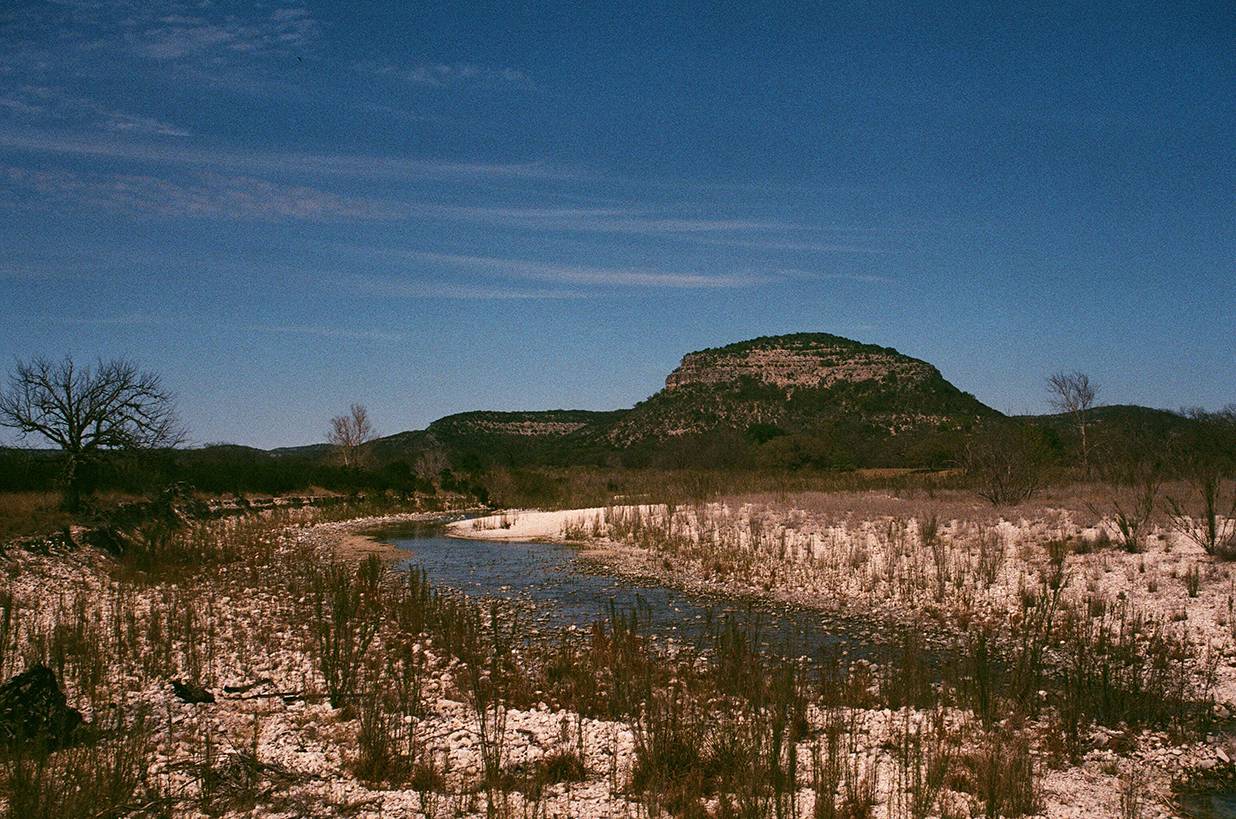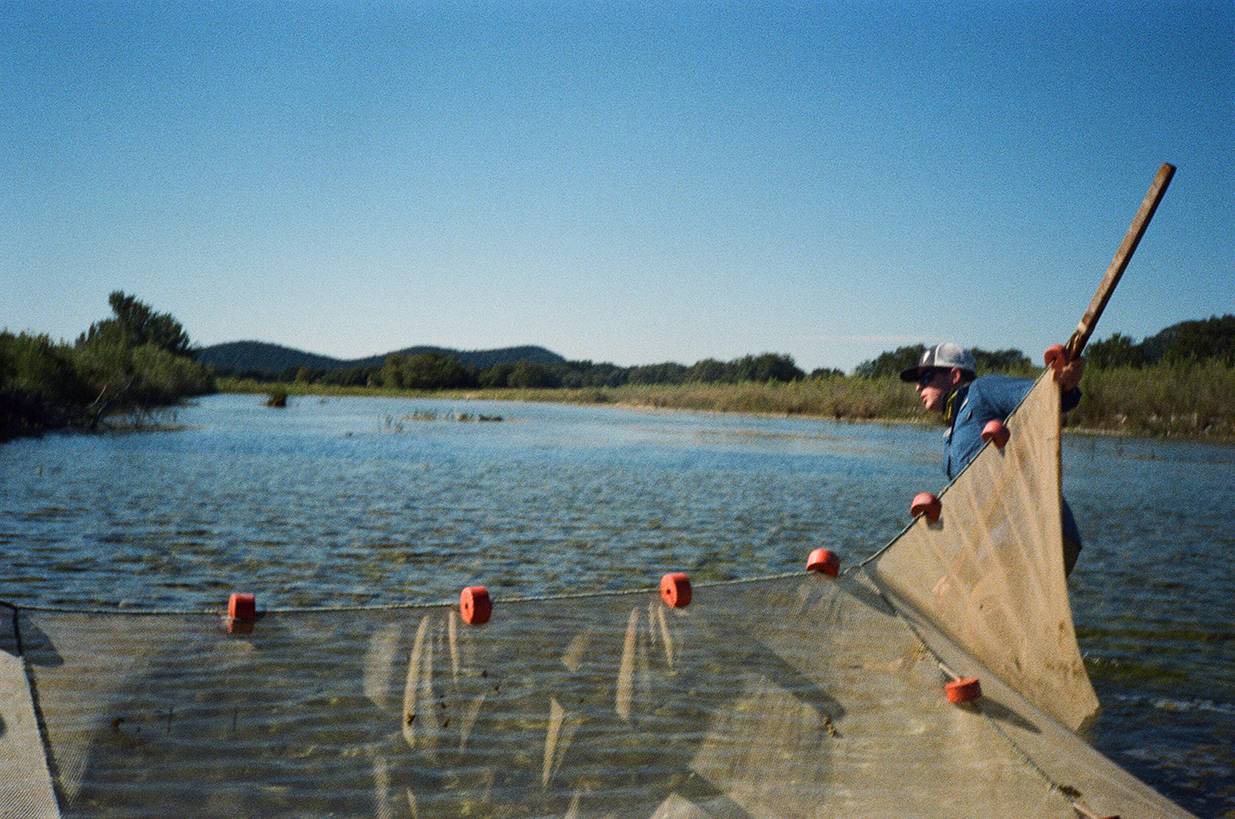Matt Joyce | June 2, 2023


Growing up in San Antonio, Texas State University alum Lauren Chappell would occasionally drive west with her family on US Highway 90, crossing the Nueces River in areas where scant pools of water dotted an otherwise dry ribbon of dry rock and gravel.
Those memories proved to be formative for Chappell, who in May completed her master’s degree in Aquatic Resources-Aquatic Biology with a thesis on fish populations in the Nueces, Frio, and Sabinal rivers.
For the thesis —Hydrology and geology as structuring mechanisms of semi-arid fish communities — Chappell sampled fish communities on the three rivers and found that fishes in downstream isolated pools of the Nueces were surviving better than expected, even during a drought. This could hold implications for fish in other Texas rivers as the region deals with patterns of increasingly dry conditions.
“The fish thrive during wet years when they’re able to disperse,” explained Chappell, who presented her research this May at the Christmas Mountains Research Symposium in West Texas. “Then during dry years, the fish hunker down in isolated little pools, but their populations are still pretty stable. The message is we shouldn’t overlook these pools — we should also study these areas that have traditionally been seen as a total loss of suitable habitat.”
Dr. Timothy Bonner, a professor in the Department of Biology who runs a lab in the Aquatic Biology program, advised Chappell on her thesis. He said it was a surprise to find that isolated pools in dry reaches of the river — far from the spring-fed headwaters — can provide habitat for native spring-associated fishes.
“Not all spring systems in arid and semi-arid regions behave the same way,” he added. “Lauren’s study contributes more to our basic understanding on how spring systems support aquatic communities during dry periods. Her findings support the concept of Edwards Plateau spring systems serving as evolutionary refugia with permanent water sources during glacial and interglacial periods over the last 2 million years. Organisms evolved and created new species, which is part of the reason we have many endemic species within the Edwards Plateau.”
Chappell’s research analyzed the karst spring complexes that sustain the Nueces, Frio, and Sabinal rivers, incorporating aspects of biology, geology, and hydrology. The three Hill Country rivers emerge on the Edwards Plateau and flow across the Balcones fault, losing water that seeps back underground into the Edwards Aquifer.
Chappell made research trips to sample fish populations in 2021 and 2022, which were drought years as defined by the National Oceanic and Atmospheric Administration and coincided with La Niña weather systems. She compared her findings to data collected by TXST graduate student Cody Craig in 2015 and 2016, which were wet years coinciding with El Niño weather patterns. Chappell participated in one of Craig’s 2015 fieldwork trips as an undergraduate assistant while earning her degree in wildlife biology.

Bonner said Craig was collecting data for a different purpose, but Chappell thought of a new research angle utilizing the historical data along with new research.
“A couple of years of below average rainfall had culminated in extreme drought conditions,” he said. “Lauren developed the idea of making new collections in the three rivers, comparable to our previous work, so we could assess the effects of extreme drought conditions. To understand these systems and what we were seeing, Lauren spent a lot of time comprehending the geology of the area, which gave us a very useful perspective.”

The researchers used seines to scoop up the fish for examination, looking for spring-associated species such as the Nueces roundnose minnow, the greenthroat darter, and the headwater catfish. Chappell also consulted U.S. Geological Survey records of the river’s flow level and NOAA weather records.
Chappell compared the diversity and numbers of fishes during drought years versus wet years. She looked at how the fishes fared at different points on the river — from the source where springs added flow; to middle points where rivers partly drained back into the ground; to downstream points where water had reentered underground channels and the riverbeds ran mostly dry.
The dry section of the Nueces is where Chappell found spring-associated fishes thriving in pools of cool water. She said this is likely due to alluvial springs that discharge shallow pools of water that circulates in sand and gravel right beneath the riverbed’s dry surface.
Chappell, who plans to begin a doctorate program at another university next spring, said her findings show the need for more study of the Nueces River. The river basin provides the largest amount of water to the Edwards Aquifer, which is a source of drinking water for more than 2.5 million Texans.
“My love and passion for the Nueces River basin brought me to this thesis,” she said. “I spent a lot of time out there as a kid, and then I had the opportunity to continue on the dataset of Cody Craig, who is one of my mentors. I think we need future biomonitoring projects in this basin because the Nueces River is understudied and very important to our aquifer.”
After her graduation in May, Chappell devised her own spin on the TXST graduation tradition of the San Marcos River jump. She headed west on US Highway 90 with a friend, donned her regalia, and jumped in the Nueces River.
Share this article
For more information, contact University Communications:Jayme Blaschke, 512-245-2555 Sandy Pantlik, 512-245-2922 |
